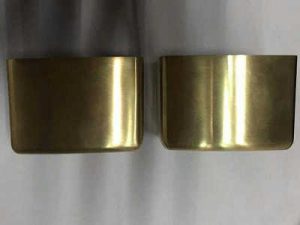Know about process of aluminum sand castingPosted by Aluminium Die Casting on October 23rd, 2019 Sand casting is the most widely used process in the foundry industry, production by means of this method accounts for most of the total casting tonnage. Almost all alloys can be melted in sand; in fact, it is one of the few processes that can be used for metals with high melting temperatures, such as nickel and titanium. Bronze Die Casting consists of emptying molten metal into a sand mold, letting it solidify and then breaking the mold to remove the foundry. Subsequently, the foundry goes through a cleaning and inspection process.
Smelting in sand requires a pattern or model to the size of the part, slightly enlarged, taking into consideration the reduction and the tolerances for the machining of the final piece.
The mold is a cavity that has the statistical shape of the piece to be cast. The foundry sand is silica (Si02) or silica mixed with other minerals. This sand must have good refractory properties, expressed as the ability to withstand high temperatures without melting or degrading. Other important characteristics are: the size of the grain and the shape of the grains. Small grains provide a better surface finish in the foundry, but large grains are more permeable, so that the gases escape during emptying. Molds made of irregular grains tend to be stronger than round grain molds due to interlocking of the grains, but this tends to restrict permeability.
Shell molding, also known as SHELL-MOULDING, is carried out by contacting resin-coated sand (shell sand) with the model that previously dried at a temperature of 250 ° C. The resin that carries the sand, when in contact with the hot model plate, the sand spread around the model, leaving a mold in the form of a shell that we will separate from the model. In this process, the models must be good conductors of heat, resist temperature changes, so they must be metal (iron or steel).
It is a molding that tries to harden molds and hearts (males) without the need for heat. Silica sands are used, the binder being hydrated sodium silicate (Na2OSiO2 • XH2O). The mold is passed through a stream of CO2, reacting this with sodium silicate and water. This reaction results in a sodium carbonate and a silica gel, which is the fundamental element as sand binder. The models and boxes used may be the same as for green sand molding.
The main function of a refractory coating for molds a thin, refractory, lubricant and penetration resistant film of molten metal to produce parts with a good to excellent surface finish. The Aluminum Die Casting Companies requires that the quality and castings of any metal or alloy reflect a true copy of the required model. It is here where refractory coatings play an important role. The Die Cast Aluminum Alloys has good resistance to corrosion and oxidation. Most of them have good resistance to corrosion in freshwater, seawater, concentrated nitric acid, nitric acid, gasoline and various organic compounds. Like it? Share it!More by this author |



